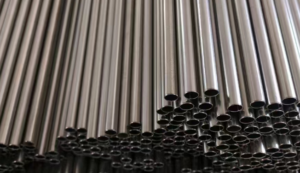In the engineering field, selecting the right material is crucial to ensuring product performance and reliability. Monel K500 alloy and Inconel 625 alloy, as two high-performance nickel-based alloys, both exhibit excellent properties, but there are some differences in material composition, high-temperature resistance, corrosion resistance, oxidation resistance, and application scope. In this blog post, let’s take a closer look at the differences between Monel K500 alloy and Inconel 625 alloy.

5 Major Differences Between Monel K500 Alloy and Inconel 625 Alloy:
Firstly, in terms of material composition, Monel K500 alloy is primarily composed of copper and nickel elements and generally contains aluminum, titanium, and other alloying elements, which also give it excellent corrosion resistance. Inconel 625 alloy is mainly composed of nickel and chromium, and also contains molybdenum, iron, and other alloying elements, which give it outstanding corrosion resistance and high-temperature strength.
Secondly, in terms of high-temperature resistance, Monel K500 alloy exhibits excellent high-temperature performance. Especially at 700°C, Monel K500 alloy can still maintain high toughness and impact properties. Compared to Monel K500 alloy, Inconel 625 alloy has even better high-temperature resistance, capable of long-term use at temperatures up to 1,093°C without softening or embrittlement.
Furthermore, in terms of corrosion resistance, both Monel K500 alloy and Inconel 625 alloy exhibit excellent corrosion resistance. Due to its high nickel content, Monel K500 alloy demonstrates good corrosion resistance in many strong acid and strong alkali environments. The unique chemical composition and solid solution structure of Inconel 625 alloy make it exhibit outstanding corrosion resistance in weak corrosive environments such as atmosphere, natural water, seawater, neutral salts, and alkalis.
Additionally, in terms of oxidation resistance, Monel K500 alloy has excellent oxidation resistance and can remain stable in high-temperature and high-pressure environments. Especially in the temperature range of 600°C to 800°C, its oxidation resistance performance is even more outstanding. Inconel 625 alloy also has excellent oxidation resistance and can maintain good oxidation resistance during long-term use in the temperature range of 550°C to 700°C.
Moreover, in terms of application scope, the excellent strength, outstanding corrosion resistance, and high-temperature resistance of Monel K500 alloy make it an ideal material for aerospace, petrochemical, marine engineering, and other fields. It is widely used in the manufacturing of components such as aeroengine blades, oil well drill rings, pump shafts, and valve seats. The even better high-temperature resistance of Inconel 625 alloy allows it to work stably for a long time in high-temperature and corrosive environments, making it highly favored in the aerospace field. It is commonly used in the manufacturing of components such as combustion chambers, turbine disks, and nozzles.
Summary
In summary, both Monel K500 alloy and Inconel 625 alloy exhibit outstanding comprehensive properties, but their differences in material composition, high-temperature resistance, corrosion resistance, oxidation resistance, and other aspects make them widely used in many fields. In practical applications, the choice of which alloy material to use needs to be based on specific requirements and application scenarios to ensure that the alloy products have excellent performance and reliability.
Why Choose Huaxiao Alloy?
Thank you for reading our article and we hope it can help you to have a better understanding of the differences between Monel K500 alloy and Inconel 625 alloy. If you are looking for suppliers and manufacturers of Monel alloys and Inconel alloys, we would advise you to visit Huaxiao Alloy.
As a leading supplier of Monel alloys and Inconel alloys, Huaxiao Alloy offers customers high-quality Monel K500 alloy and Inconel 625 alloy at a very competitive price.



